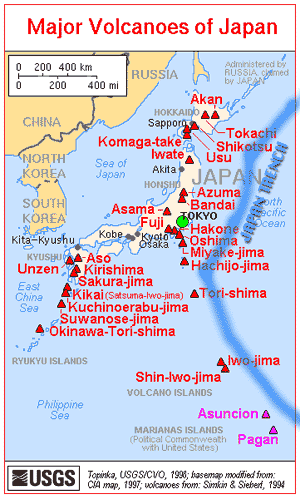Origin of any magma :
1.) Was water present YES/NO
2.) Did it melt entirely or only partially?
Water present: temperature for melting is depressed. Melts at a lower temperature.
Pressure present: pressure has the opposite effect of water, it increases the melting temperature if the magma is dry.
But ... If the magma is wet, the increased pressure again has the opposite effect, it increases the melt depression of the water even more.
Complete melting: homogeneous solution just like the starting materials.
Partial melting: A rock tends to be a heterogeneous mixture, and often melts by mineral composition in the sample. A pure mineral melts at a fixed temperature, a rock melts over a range of temperature. (Because it is a mixture of individual minerals.)
Basaltic Magma contains olivine, pyroxene, and plagioclase which are all non-water containing. Hence it must be created by a water free process, and it is made up of materials that are mainly thought to exist in the mantle.

Andesitic Magma has a composition close to that of the crust. Hence it leads one to believe that it must be formed by melting a portion of the crust. This may be true to a small extent, but there is another explanation.
If basaltic magma is heated at the proper temperature and pressure, and contains some water, it produces a melt with an andesitic composition. Conditions are correct for this at about 80 Km depth where ever the sea floor is subducting.
This line of subduction maps one for one where the chain of adesitic volcanoes exist, and the vents are usually at a distance of about 250 km from the plate junctions.
This happens to be the point at which the subducting plate would have dived to a depth of about 80 km. There is a trench system east of Japan caused by the subduction of the pacific plate. About 250 km west there is a strong chain of volcanoes in Japan that are andesitic.
Rhyolitic Magma is formed on continents and at some locations where andesitic magma forms. Active rhyolitic volcanoes give off water, and the resultant minerals often have (OH) groups that indicate water was present during their formation.
Laboratory testing has confirmed that a "wet" partial melt of andesitic composition can yield a magma with a rhyolitic composition. Since rhyolitic magmas have high silica content, they become more viscous as they rise and often fail to form volcanoes. They are the source for many intrusive rocks.
In the case of rhyolitic magma the water content should make the magma melt more easily at depth as it is also wet, but as the rhyolite rises the reduced pressure on the wet magma create more silica and thus more viscosity. The further it rises, the more viscous it becomes. Thus as it approaches the surface it already has begun to cool.
(modified)
| NEXT | TOC | PREV |